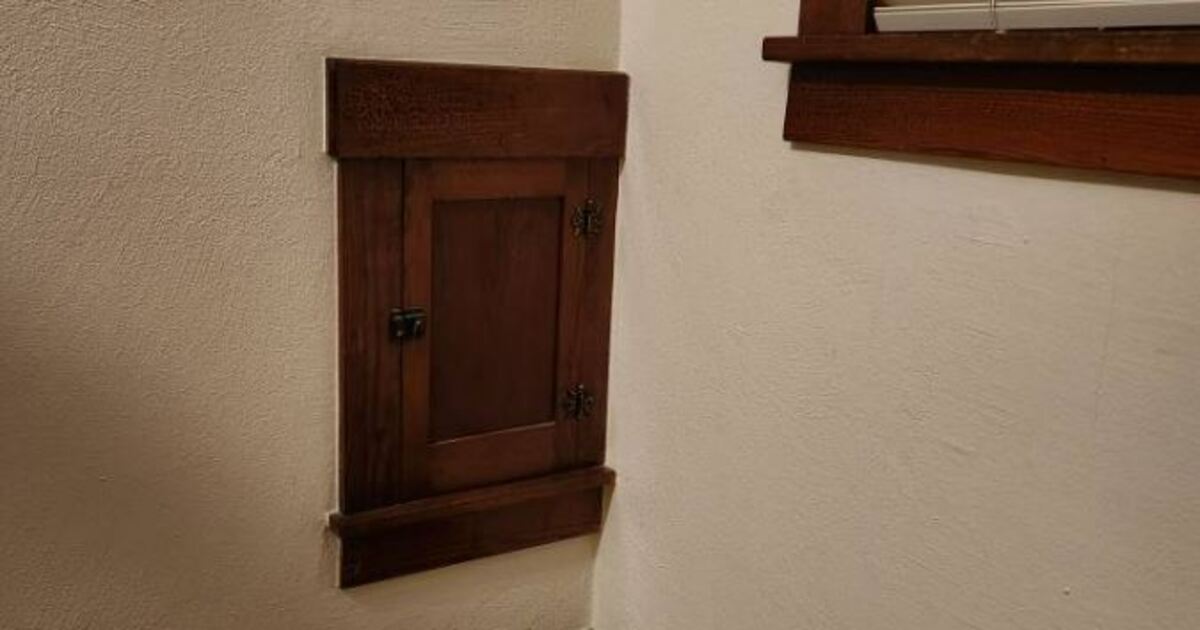When Old Houses Held Secrets In Plain Sight

source: Jamie Hofschulte/Facebook
In an old house, right along the base of a wall, with a carpet line above, is a tiny wood door. These could often be old electrical access panels, which might go unnoticed in the vintage house, with all the vintage grams—until you notice it and gaze-and-wonder. What was it for? Why is it so small? Why does this look like something in the storybook of secret passages, no one would know?
That hatch, looking back, likely served a purpose long ago. It was probably an old, functional electrical access panel—such boring useable utility features for the house, have their pampered environment and supported space, around the back-external-sides of the walls and spaces, including these access panels.
Time of Quiet. Simple Layout.
Long ago, before the smart house, and central-wiring closets, builders had a different philosophy of design for building houses. Everything belonged somewhere, even bug’ly necessity, [fuse boxes, transformers] belonged to some space, too. So they would just address it, cover it with a tiny wood door cover, engraved into the trim and molded borders of the house. Often, these old electrical access panels were cleverly hidden.
This was both functional, and perfectly assemblage too. Craftsman placed them into a corner, a stairway, or hidden corridor-in hidden spaces, for it was functional. No-one would see it, with out it being vision, but these panels served their function well.

Who Knows What Hides Behind the Door?
While not all small wall doors had the same purpose, these tiny doors typically had:
• Fuse panels–before circuit breakers
• Telephone systems for landlines
• Doorbell transformers or early versions of intercom systems
• Knob-and-tube access points for old electrical networks
They were often located near the base of walls for easy access but hidden in the wall.
Sometimes, It Wasn’t Even Electric
Sometimes they led to entirely different uses. In homes built from the 1920s to 1950s, similar doors led to laundry chutes, delivery doors milk or wood storage.
While these aren’t exactly the same type of simple access panel and location, the detail and location of this one–on a stairway and as part of the matching trim work–just has to mean it was also an old access panel for wires at one time.
Why We Love Little Doors
It is cool to uncover a little door like this. It is a flashback to the time when builders designed a home for a use–and purposefully put some thought into non-glamorous parts of the home. Those old electrical access panels add nostalgia to the experience.
Instead of making drywall cuts for the repairs, and electrician opened a hatch to make the contacts. No applications, no techno harddrive which contained wiring–just latches, and screw drivers, and a little handiwork.

Really Want to See Inside?
If you find a hatch like this in your home, open it at your own risk! See what’s back there. You might see:
• Old fuse or breaker systems
• Old telephone connections
• Empty space if everything has been discarded. It’s reminiscent of old electrical access panels.
It really doesn’t matter what’s back there, just enjoy it and appreciate it as a tiny piece of history. When builders added utility and character into even simple parts of a home.
One Last Word of Reminder
In this unsuspecting world of wireless everything and hidden hubs, we often forget how homes once operated. Those quaint little wooden doors had a good function, and did it unnoticed.
If you have/had a door in your home, or remember one as a child, was it a treat to see a time when homes had so much more character? They didn’t just build a home for looks, but built for utility, even down to the fine little parts that still make us smile, like the intriguing old electrical access panels.